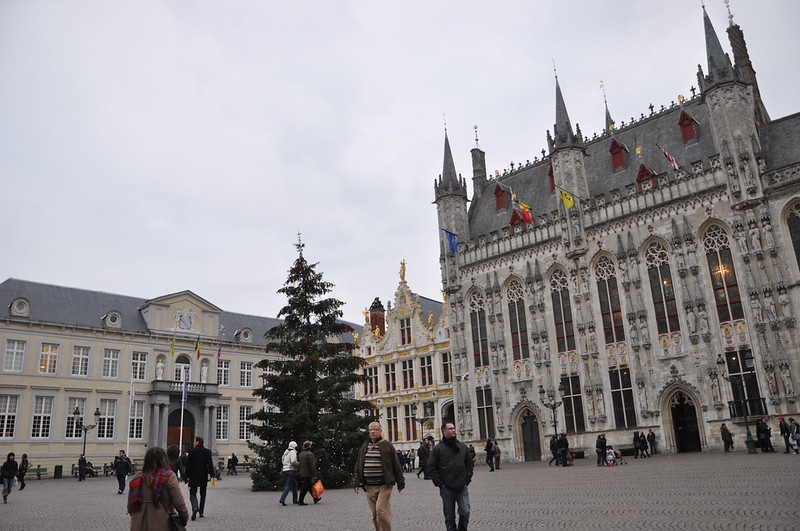
A praça de Burg juntamente com a Markt fazem parte da riqueza histórica e arquitectónica de Bruges. A primeira ainda que mais pequena concentra alguns dos edificios mais relevantes da cidade como o Stadhuis (Câmara Municipal) ou a Basílica do Sangue Sagrado.
Saímos da Markt e entrámos na Burg onde o Stadhuis com a sua trabalhada fachada reclama de imediato a nossa atenção. A construção é do século XIV e reflecte o grande momento em a cidade estava no seu apogeu no comércio internacional.
The Burg square together with the Markt are part of the rich history and architecture of Bruges. The first although smaller concentrates some of the most important buildings of the city as the Stadhuis (City Hall) or the Basilica of the Holy Blood.We left the Markt and entered the Burg where the Stadhuis with its crafted facade demands our attention immediately. The building is from the fourteenth century and reflects the great momento that the city had at its peak in international trade.
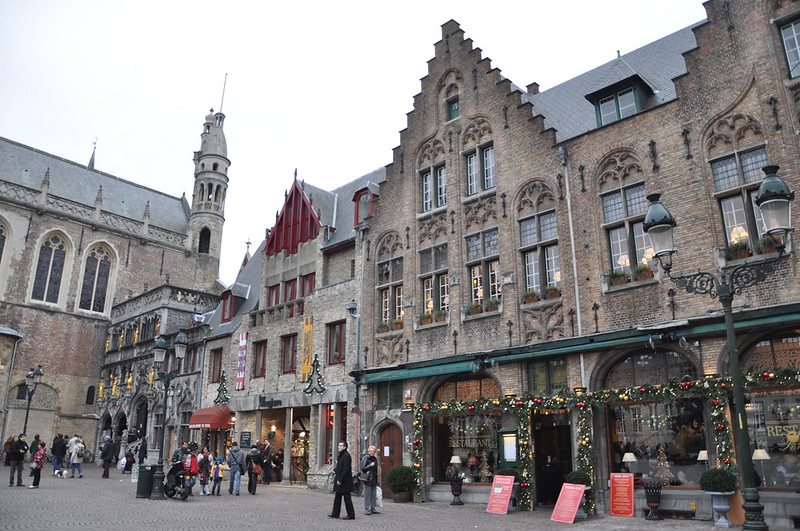
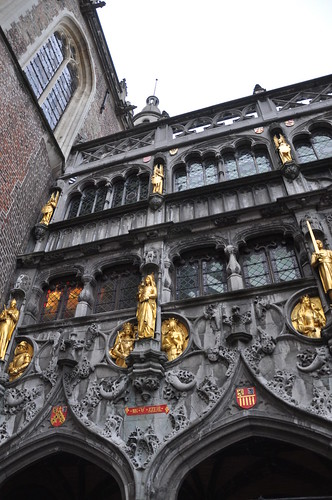
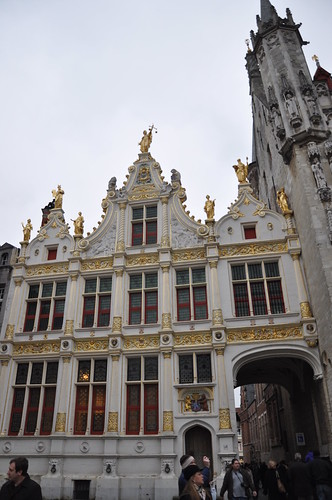
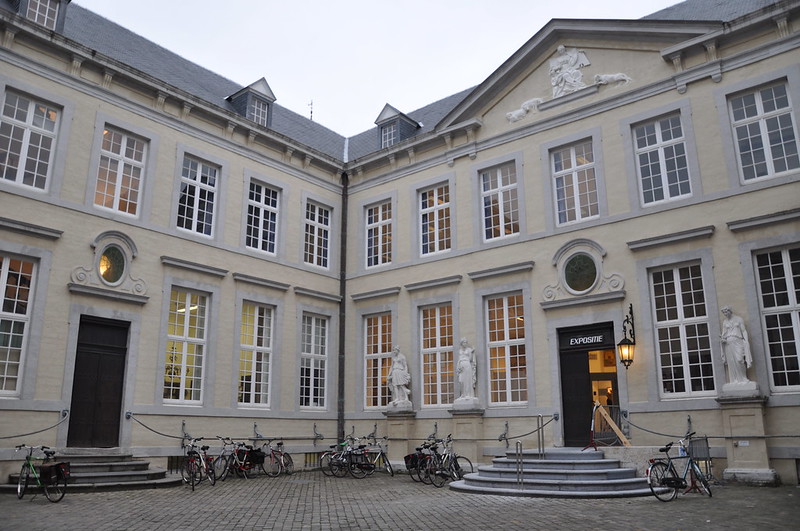

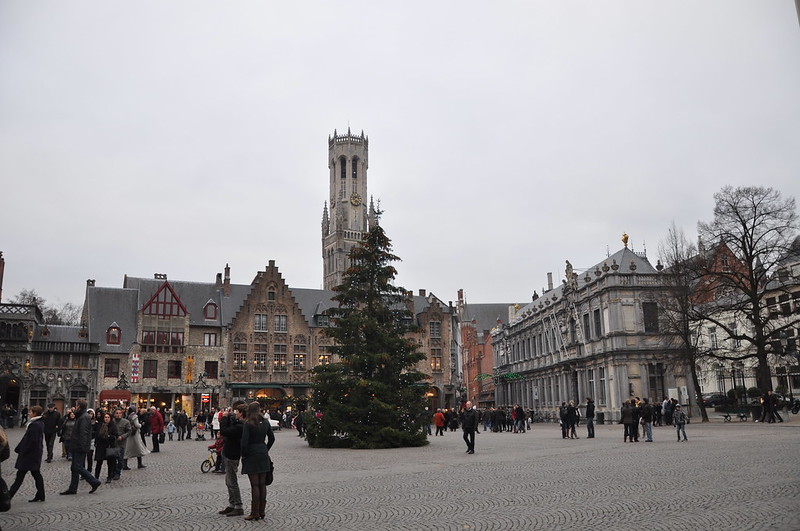
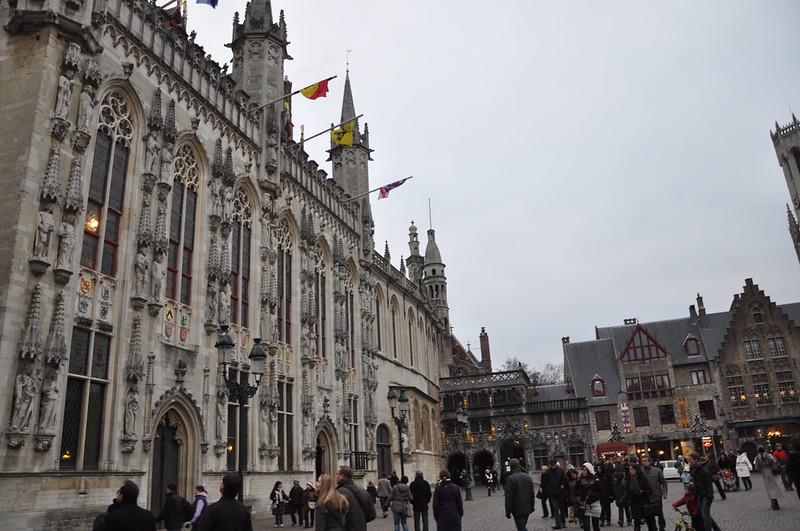


A Basílica foi o primeiro que visitámos, está no lado direito da praça e não podemos deixar-nos levar pelo seu pequeno tamanho, no seu interior está um pedaço de pano que terá limpo o sangue de Cristo e que veio da Terra Santa no século XII.
Ao passar pelas portas da cinzenta fachada ornamentada com estatuetas douradas, não visitamos uma igreja mas sim duas. No nível inferior está a de estilo românico dedicada a S. Basílio, menos ostensiva que a do piso superior que no século XV foi remodelada para um estilo gótico depois destruída durante a invasão francesa e voltou a ser reconstruída no século XIX com o mesmo estilo.
The Basilica was the first we visited, is on the right side of the square and we can not let ourselves be carried away by its small size, inside is a piece of cloth that might have be used to clean the blood of Christ and came from the Holy Land in the twelfth century .
When you walk through the doors of the gray facade ornamented with golden statuettes, we don't visit one church but two. The lower level is in a Romanesque style dedicated to S. Basil, less ostentatious than the upper deck which was remodeled in the fifteenth century Gothic style to a later destroyed during the French invasion and was again rebuilt in the nineteenth century with the same style.
When you walk through the doors of the gray facade ornamented with golden statuettes, we don't visit one church but two. The lower level is in a Romanesque style dedicated to S. Basil, less ostentatious than the upper deck which was remodeled in the fifteenth century Gothic style to a later destroyed during the French invasion and was again rebuilt in the nineteenth century with the same style.


Outro dos edificios mais marcantes da praça está ao lado do Stadhuis. O Oude Griffie é um edificio do Renascimento construído entre 1534 e 1537, restaurado recentemente e que funciona como museu. Antigamente funcionaria como um registo civil.
Junto ao mesmo está uma passagem a que chamam de Burro Cego (Blinde Ezelstraat) e que leva ao Mercado do Peixe.
Another of the most remarkable buildings of the square is next to the Stadhuis. The Oude Griffie is a Renaissance building constructed between 1534 and 1537, recently restored and operates as a museum. Formerly act as a registrar.
Next to it is a passage that called Blinde Ezelstraat that leads to the Fish Market.
Next to it is a passage that called Blinde Ezelstraat that leads to the Fish Market.


Um edificio mais recente está do lado esquerdo do Oude Griffie, é o Landhuis também conhecido como o Palácio da Liberdade de Bruges. Foi construído no século XVIII.
A newer building is on the left of the Oude Griffie, Landhuis is also known as the Palace of Liberty of Bruges. It was built in the eighteenth century.



Our guide of:

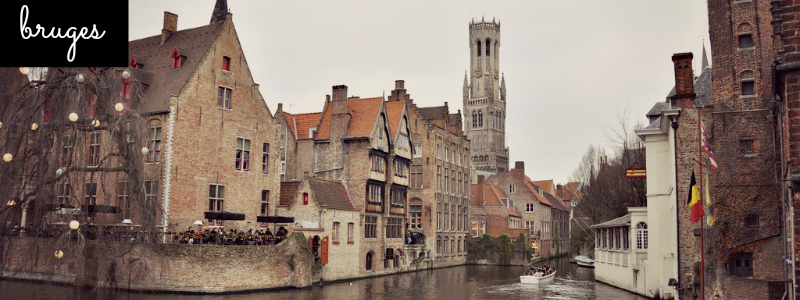
Sem comentários:
Enviar um comentário